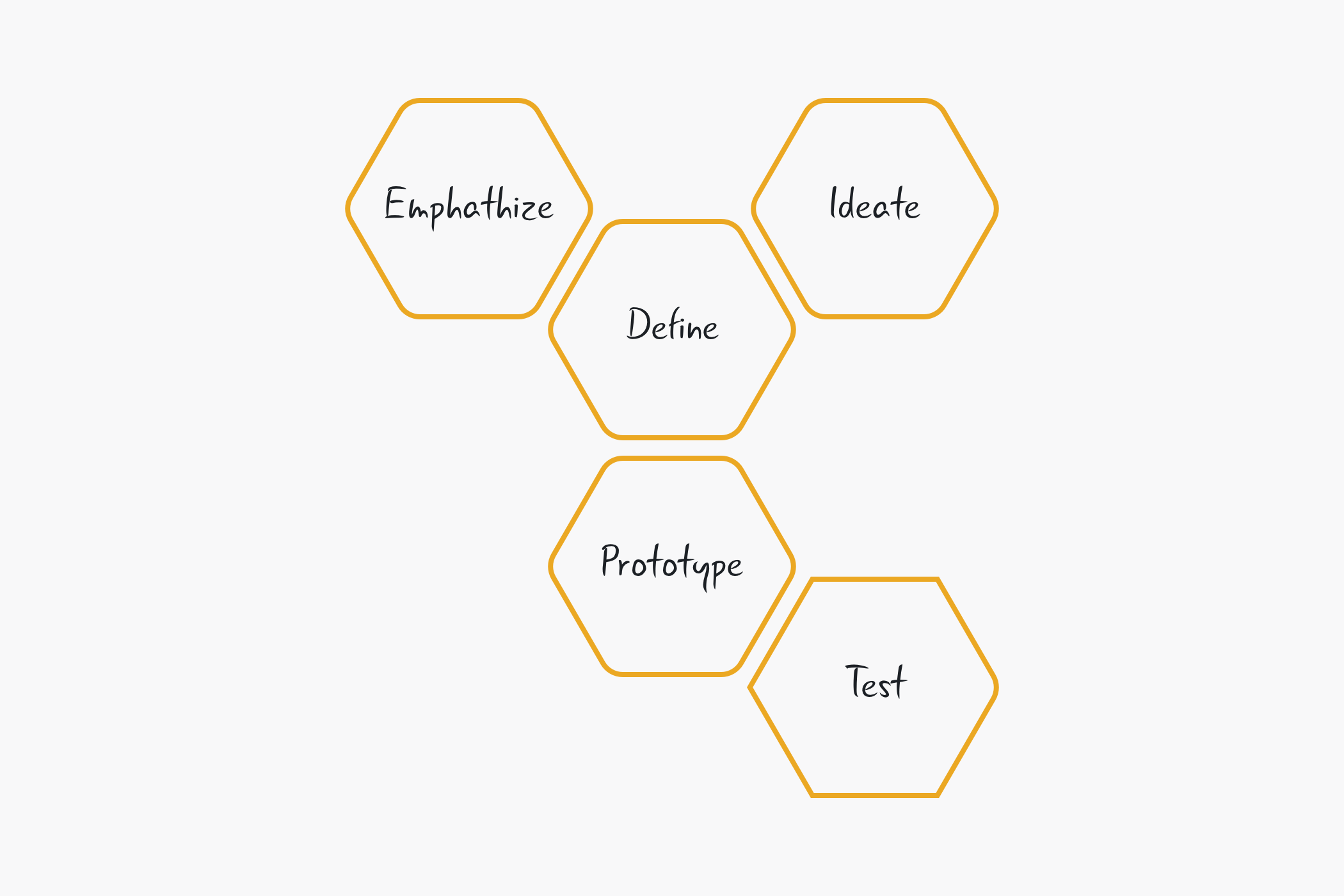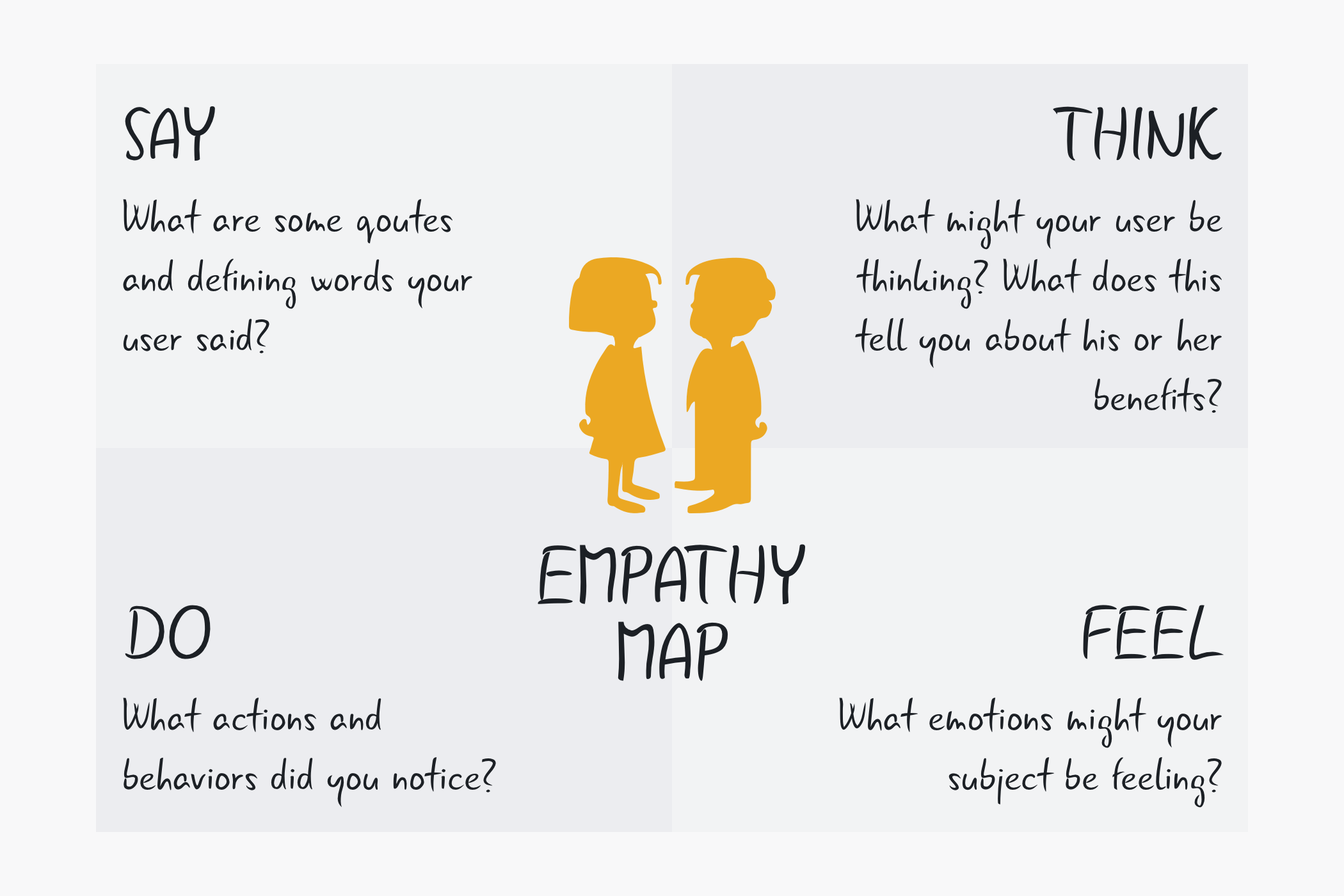Information technology is full of patterns, which help us analyze the world and create things with a guarantee of fitting users demands. Loosely speaking, the pattern is a regularity that one can use to build similarly looking and functioning systems. For instance, software developers identify and use patterns to create reusable solutions for solving similar problems. However, patterns are the most commonly used in the design. In this article, we will take a walkthrough of UX design patterns from the point of design thinking approach.
Design thinking as a powerful UX design methodology
Quick googling will yield you various UX design patterns. However, the approaches differ vastly and mainly by the departing point. What makes design thinking one of the most powerful UX design methodology is that it puts empathetic approach as the core of solving any problem.
The history of the methodology started in the 1960s. From science and technology, design thinking began penetrating into other fields. In the 1980s, this methodology became one of the subjects in Stanford University.
Design thinking is based on human approach, which implies that, first, you put all efforts into seeing the problem of your user from his point of view. You need this to create an emotional connection between service/product and its end user.
The way you apply design thinking isn’t linear – its real power is in an iterative approach. One iteration includes five practical steps that can be repeated until both UX designer and users of the product/service reach the point of satisfaction with the result. Let’s take a closer look at those steps!

Stanford d.school’s design thinking framework.
1.Empathize
In modern UX design patterns, empathy is becoming the core element of creating user experiences. That’s why UX designer isn’t the person that spends all the time in the office and relies on his imagination only – he needs to know those people for whom he creates.
For this stage, you need as much information about your audience as possible. The ideal scenario is to go into the field and contact professionals, research other existing solutions, and survey potential customers. The primary goal is to get a multi-dimensional view of your audience and problems they face.

2.Define
At this stage, you are going to use previously gathered information. How? You need to define the problem which you will be solving during next stages. Again, your potential audience should be the departing point, not what you are going to gain if they use your product/service.
It’s a stage when you need to ask yourself various questions. Who are your users? What kind of lifestyle do they live? Which part of their life does the problem belong to? How complicated is the problem? Of course, these are just example questions, and you will definitely come up with more questions (and answers) doing some brainstorming.

3.Ideate
Now you need to generate ideas. Exciting, isn’t it? The best way to handle it is to do some brainstorming. Applicable across various UX design patterns, it’s proved to be an extremely efficient technique, especially when done in cross-field teams (which means that not only designers are involved but also specialists from adjacent fields).
However, it turns out that brainstorming doesn’t aim at finding a perfect solution – but it helps to create an environment that encourages the member to express their ideas freely. If brainstorming session is done successfully, at the end of it, the team manages to look at the problem in one direction and generate a wide variety of choices.
[The goal of brainstorming] is to give you a mass quantity of ideas quickly … not solutions, but the seeds to possible solutions”, says Art Sandoval from Lunar Design. “Solutions take real hard work. Brainstorming gets you the lay of the land quickly for possible solution areas to investigate. But good solutions are like body building, there’s no way to cheat the hours of the gym you got to put in.

4.Prototype
In the world of UX design patterns, prototyping is all the time on the tip of tongue. Not even being a designer, you may have come across this word quite often (if not prototyped by yourself). And it’s so popular because it’s extremely powerful. The goal of this step is to create a solution to the problem you defined at the previous stage.
A prototype isn’t a full-fledged product, but it’s functional. “A good prototype is a prototype that facilitates answering the questions you have”, says Molly Nix from Uber. Sometimes you want to test just one element of the product, which means that you need to prototype only this element. The trick is that you don’t spend all your resources on building a thing that your users won’t find useful. Instead, you create its low-fidelity version and test your hypothesis.
5.Test
Testing is an essential part of all UX design patterns. It helps to see how good your solution fits the real world. With every iteration possibilities that seemed to be endless start diminishing, which one usually uncovers during testing. Therefore, the next iteration starts with more information and profound knowledge of the audience and design goals.

Conclusion
In this article, we have taken a quick look at design thinking as one of the most potent approaches to UX design patterns. It turns out that the core premise of creating decent user experience is the profound knowledge of the targeted audience. By applying five steps of design thinking methodology – empathizing, defining, ideating, prototyping, and testing – you can trigger an emotional connection between the product/service and a user and create a long-lasting impact.
Discover how much does it cost to design a Web Application here.




